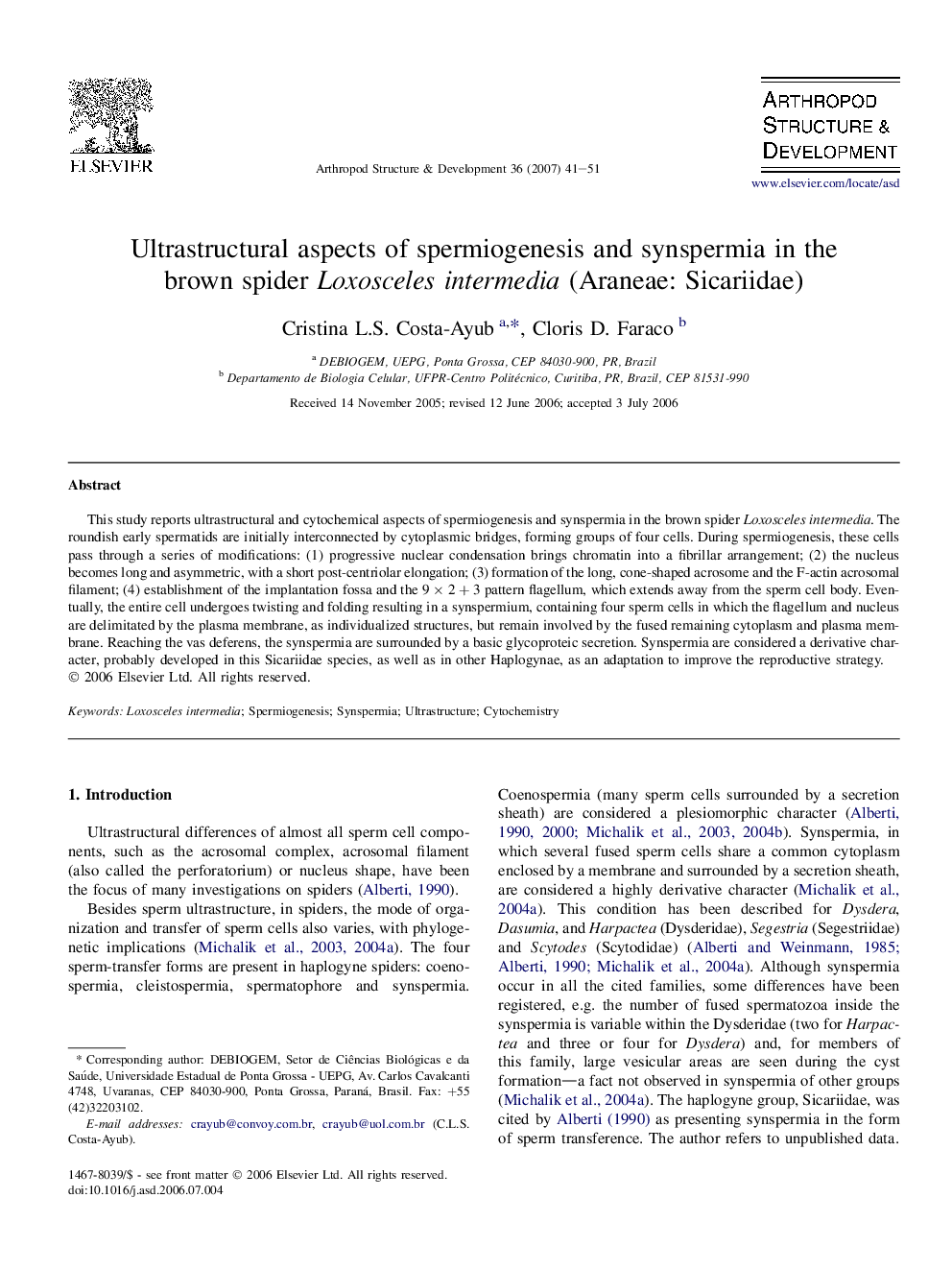| Article ID | Journal | Published Year | Pages | File Type |
|---|---|---|---|---|
| 2779104 | Arthropod Structure & Development | 2007 | 11 Pages |
Abstract
This study reports ultrastructural and cytochemical aspects of spermiogenesis and synspermia in the brown spider Loxosceles intermedia. The roundish early spermatids are initially interconnected by cytoplasmic bridges, forming groups of four cells. During spermiogenesis, these cells pass through a series of modifications: (1) progressive nuclear condensation brings chromatin into a fibrillar arrangement; (2) the nucleus becomes long and asymmetric, with a short post-centriolar elongation; (3) formation of the long, cone-shaped acrosome and the F-actin acrosomal filament; (4) establishment of the implantation fossa and the 9Â ÃÂ 2Â +Â 3 pattern flagellum, which extends away from the sperm cell body. Eventually, the entire cell undergoes twisting and folding resulting in a synspermium, containing four sperm cells in which the flagellum and nucleus are delimitated by the plasma membrane, as individualized structures, but remain involved by the fused remaining cytoplasm and plasma membrane. Reaching the vas deferens, the synspermia are surrounded by a basic glycoproteic secretion. Synspermia are considered a derivative character, probably developed in this Sicariidae species, as well as in other Haplogynae, as an adaptation to improve the reproductive strategy.
Related Topics
Life Sciences
Agricultural and Biological Sciences
Insect Science
Authors
Cristina L.S. Costa-Ayub, Cloris D. Faraco,
